Race The Sun – Review
by Chris
|
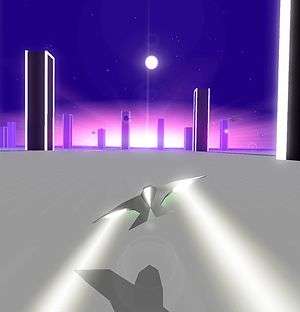 Race The Sun, created by indie developers Flippfly, gives the player the task of flying a solar-powered craft in an effort to travel the furthest distance as the sun slowly sets in the background. An extremely simple premise, yet it becomes addictive and tricky as you travel further into the game world avoiding enemies, falling buildings, and other hazards.
Race The Sun, created by indie developers Flippfly, gives the player the task of flying a solar-powered craft in an effort to travel the furthest distance as the sun slowly sets in the background. An extremely simple premise, yet it becomes addictive and tricky as you travel further into the game world avoiding enemies, falling buildings, and other hazards.
If you have come to Race The Sun looking for a rich story, you’re going to be quite disappointed, as there isn’t one as such. I believe the game is begging for one, given the nature of what it is, although I expect this to split opinions down the middle. The lack of story doesn’t detract from the experience, but I found myself filling in the missing story with my own imagination. Race The Sun, to me, is a story about someone trying to get a really important sandwich to their boss before the sun sets. Equally, it could be about a world slowly dying, as you try and escape before the sun crashes into the planet. It really isn’t that important, but I feel it gives drive and purpose to your actions.
Beginning life as an alpha on the game site Kongregate, this could have been written off as ‘just another’ take on a popular concept. The fact is that there is a plethora of games in this genre, and all that changes is the scenario, so the key is finding the best of the bunch and not settling for a sub-par product. Race The Sun manages this with a few simple rules and ideas that set it apart from the rest.
The aim is to get the highest score based on how long you survive as the sun slowly sets in the background. Of course, the further you get into the game world, the more there is to avoid, and what starts out as a few random blocks and pyramids soon becomes falling columns, blinding rockets, and ships with laser beams. I fully expected to see a giant man hurtling kitchen sinks at me during one scenario.
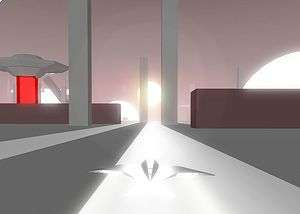 The other problem is the setting sun, which is something of an issue when your craft is solar powered. In order to keep your attempt at a high score going as long as possible you can collect yellow icons, which essentially reverses the sun’s descent. Nothing else is affected by the reverse of time, so your position, score, and progress, do not change. If this all sounds too easy, then you’d be right in thinking so. The clever chaps over at Flippfly have included one final feature, however, which is that whenever you pick up a yellow icon, you get a huge speed boost. Those bastards. While this isn’t a problem in the early stages, as you’ll quite happily zip through the first couple, it becomes increasingly difficult after the third region.
The other problem is the setting sun, which is something of an issue when your craft is solar powered. In order to keep your attempt at a high score going as long as possible you can collect yellow icons, which essentially reverses the sun’s descent. Nothing else is affected by the reverse of time, so your position, score, and progress, do not change. If this all sounds too easy, then you’d be right in thinking so. The clever chaps over at Flippfly have included one final feature, however, which is that whenever you pick up a yellow icon, you get a huge speed boost. Those bastards. While this isn’t a problem in the early stages, as you’ll quite happily zip through the first couple, it becomes increasingly difficult after the third region.
The reason for this is that you aren’t on a defined path, with the whole world open to you so, while you are always moving forwards at a rate of knots, you can also move left and right as far as you want, which means that you have to hunt for the yellow icons as you hurtle across the landscape. For the first few regions, this isn’t much of an issue. When the columns, rocks, spheres, and general crap comes flying out of the woodwork to impede your progress, however, things get very tricky very quickly. As if that wasn’t enough, as the sun sets, every object – small or large – creates a larger shadow, which of course is detrimental to your solar-powered craft. So, rather than being more careful as the rounds get harder, you’re forced to become more reckless, and you’ll wonder how you pulled off that last move, milliseconds before having to pull off another. This makes for audible gasps and clenched fists (and buttcheeks), and these moments represent the best of Race The Sun. Given everything described thus far, it should just be a case of memorising the course and then working out what the most efficient and rewarding path is, but this is pointless as a new track is created every twenty-four hours, meaning that the game constantly throws a new challenge down every day.
Not everything is out to make the experience as difficult as possible, though. Aiding you in your quest to hit the lofty heights of the leaderboard are other power-ups, such as the ability to use a one-time jump that elevates you above most of the opposition in your path, or perhaps a emergency teleport that essentially grants you an extra life should you suffer from sudden-impact syndrome. You also have an increasingly-difficult set of challenges to complete, levelling you up in the process and unlocking upgrades for your ship. These challenges provide a nice distraction but some actually force you play badly; one such objective being to collide with objects, which is exactly the opposite of what you’re trying to achieve. These types of goals feel forced and silly, considering the nature of the game; I’m all for an optional objective, but at least make it work in tandem with the game.
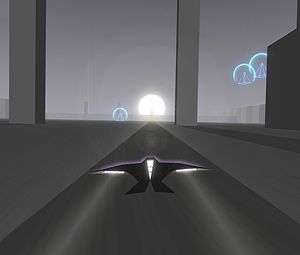 If you get bored with the standard game, you have three other options to keep you busy, the first of which is playing ‘worlds’ created by other players. These vary in challenge and style, but are unique and offer something that is usually pretty far removed from the main game, whether it be by their artistic style or how they are laid out.
If you get bored with the standard game, you have three other options to keep you busy, the first of which is playing ‘worlds’ created by other players. These vary in challenge and style, but are unique and offer something that is usually pretty far removed from the main game, whether it be by their artistic style or how they are laid out.
Of course, if you don’t fancy playing other players’ creations, you could build your own. The Simplex World Creator allows quick and easy access to create new game worlds, or even alter existing ones. I have no prior knowledge in terms of game creation or programming but it was fairly straightforward and, for anyone who gets stuck, let the internet (and more specifically the Flippfly forums) be your guide, as you will find other users to aid you, as well as tutorial videos.
Finally, there is the highly-enjoyable Apocalypse Mode, which can only be described as the basic game, but after chugging steroids, Red Bull, and a truck-load of sugar. It goes faster, the sun is already three-quarters set, and there are more obstacles than a Krypton Factor assault course. I consider it a miracle if I manage over a minute, so I can only assume that the people clocking in anything over the five minute mark are aliens, living underground in a sinister gaming commune.
All the modes can be used in a multiplayer scenario, of sorts. It is a very straightforward concept where, when you finish a race, you upload your final position to a friend and they can carry on from there, entering into a turn-based relay-race. After four attempts, the final score is uploaded to a leaderboard, and compared against other players who have taken part. It is a very unique take on a multiplayer format but certainly feels more laid back in the sense that you haven’t got people screaming at you or calling you a noob as you play. Plus, you don’t get wound up at other players’ inadequacies.
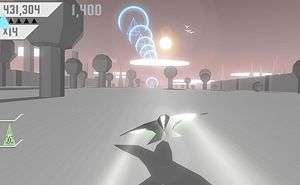 Overall, the gameplay does what it says on the tin, and is fairly addictive once you’ve had a few turns and got to grips with how the ship handles. It manages to tick the ‘just one more go’ box, nestled in the more stubborn and proud section of my mind. Equally, there isn’t a whole lot of depth here so, once you’ve seen everything, you may find it difficult to sit down for anything longer than half an hour. The multiplayer and leaderboards do give it some legs but I can’t help but feel that racing against other people, ramming them into the path of buildings, and stealing power-ups would have given it even more longevity.
Overall, the gameplay does what it says on the tin, and is fairly addictive once you’ve had a few turns and got to grips with how the ship handles. It manages to tick the ‘just one more go’ box, nestled in the more stubborn and proud section of my mind. Equally, there isn’t a whole lot of depth here so, once you’ve seen everything, you may find it difficult to sit down for anything longer than half an hour. The multiplayer and leaderboards do give it some legs but I can’t help but feel that racing against other people, ramming them into the path of buildings, and stealing power-ups would have given it even more longevity.
Equally, the graphics are immediately striking but manage to fit well in the overall theme and feel appropriate for such a game. There is what appears to be a very minimalist approach, with the burning sun scorching the earth, beating against row upon row of white buildings. Several rounds later, as the red hue of the sun is disappearing behind the horizon, the imposing black buildings cast longer shadows, and what appeared to be a limited palette of colours comes crashing together highlighting the rising difficulty and levels of desperation.
The audio follows suit, and the early stages are relaxing and pleasant enough. In fact, if I wasn’t having to control a ship at break-neck speeds, I could happily close my eyes and take a nap… that is until I made it to the later levels or the sun started to set because, naturally, the game tries to raise the pressure, with imposing drum beats and the constant noise of missiles crashing into collapsing buildings.
While initially quite addictive, and a fresh take on a popular genre, it does leave something to be desired in the long run. The new map every twenty-four hours does a lot to make up for that, but there isn’t a huge amount of variety with these and I did find myself spotting plenty of similarities. I feel there is scope for taking this into the air, or even underground, dodging huge chunks of earth as you dart between pockets of daylight. It isn’t all bad, however, because the extra modes and level creator go a long way to keeping you busy, if you enjoy the standard game mode.
Pros- Pretty addictive to begin with
- Fresh take on a tired formula
- No story at all
- Not much depth in the grand scheme of things
Race The Sun is a fun game, and I’ve enjoyed my time with it. It started out as a passionate addiction to get to the later stages and see how much of it I could experience. However, within a week or so, it fell into being that game you dip into between ten rounds of Battlefield or Company of Heroes. It was a gentle reminder that games don’t have to be statistics, frustration, and micro-transactions. It is never going to sell millions of copies or win all the awards, but what it does, it does very well. It is a nerve-shredding thrill ride, which, when gripping you, will hold you tighter than most games can. It’s just a shame that when it lets go, it struggles to grasp you as tightly as it once did.
Last five articles by Chris















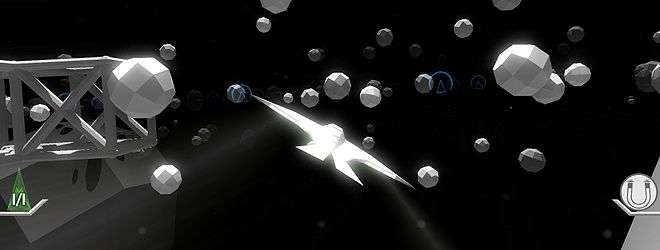
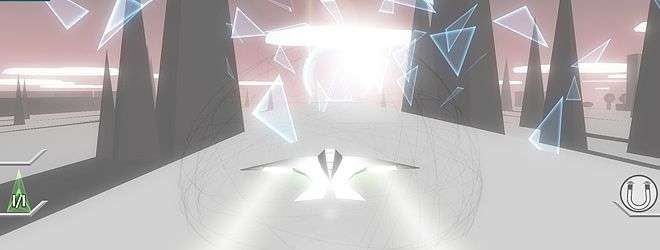
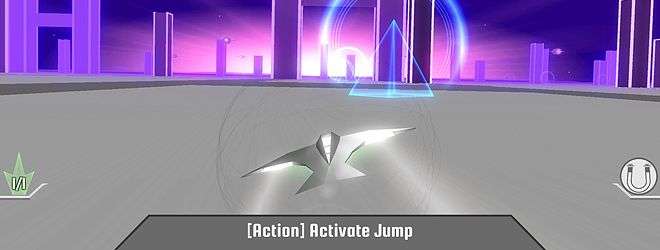
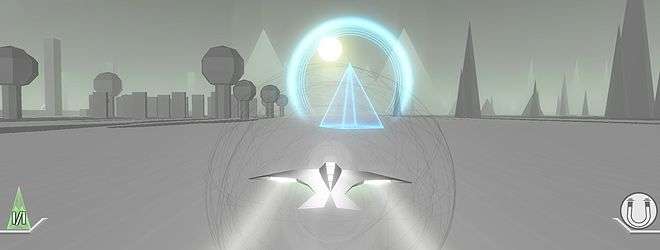






There are no comments, yet.
Why don’t you be the first? Come on, you know you want to!